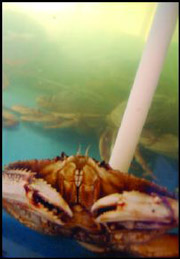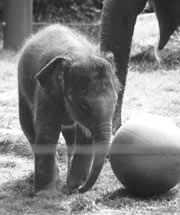TAI TUNG 659 S. King S., 206-622-7372 10 a.m.-11 p.m. Sun.-Thurs.; to 1:30 a.m. Fri.-Sat.
HOUSE OF HONG 409 Eighth Ave. S., 206-622-7997 9:30 a.m.-1:30 a.m. Mon.-Sat.; to 11:30 p.m. Sun.
OCEAN CITY 609 S. Weller, 206-623-2333 9 a.m.-1 a.m. every day
SEA GARDEN SEAFOOD RESTAURANT 509 Seventh Ave. S., 206-623-2100 11 a.m.-2 a.m. Mon.-Thurs.; to 3 a.m. Fri.-Sat.; to 1 a.m. Sun.
HO HO SEAFOOD RESTAURANT 653 S. Weller St., 206-382-9671 11 a.m.-1 a.m. Sun.-Thurs.; to 3 a.m. Fri.-Sat.
Back in the days when “Italian” still meant red sauce and espresso was something they did in Greenwich Village, Chinese restaurants were rare exceptions to the burgers-and-potatoes rule of American dining. Legends of opium dens and white slavery had faded, but these joints were still as exotic as exotic got in those days. (Chopsticks! Fortune cookies!) They stayed open all hours, and, best of all, they were cheap. Many a stoner and starving student made it through a late night on a tankful of chow fong and wonton soup. And there was the nice urban frisson of slipping down dark streets of curtained windows and bolted doors to pass through a door marked only by indecipherable ideograms and lit like carnie midway. As Jack Nicholson’s Jake Gittes discovered in the movie: Things were different in Chinatown.
Now, of course, we’ve outgrown all that. Our culture-vulture tastebuds demand ever-new sensations from ever-more- remote locales. But the Chinese restaurants of yesteryear still stand. What have these palaces of my long ago come to? Like Gittes on the trail of a hot divorce case, I went to find out.
I began at Tai Tung, perhaps the oldest local eatery still dishing out the congee. Tai Tung was never about the food. We went there to feel like we were in a Sax Rohmer novel or Charlie Chan movie. In the 1970s and ’80s, Tai Tung was the south pole of Seattle’s Axis of Insomnia (which ran north through the Doghouse, Thirteen Coins, and Twin Teepees). Like them, it stayed open halfway till forever, and all manner of people with no place better to go— cops, crooks, students, bohos, journalists—would pass through.
The menu declares that Grandpa Quan, founder of Tai Tung, “always insisted on using the freshest ingredients available.” If so, he’s spinning in his grave these days. The mu shu pork ($7.45) was a bland, greasy hash, and the rice pancakes to wrap it looked straight out of a freezer pack. The dried petals in an otherwise tasteless lily-flower soup ($5.95) weren’t much more inspiring. The high point of the meal was a creamy, amply spiked banana cooler that, at $4.50, was the best fru-fru drink deal in town, plus seven fortune cookies for two, perhaps to make up for the missing sliced orange that’s been a standard postprandial refresher at Chinese restaurants since Tai Tung’s heyday.
Some things haven’t changed: The Formica tables, dark paneling, and dusty muslin lampshades still evoke Tai Tung’s glory days. But Tai Tung, alas, is no longer the refuge for night owls it used to be. It closes at 11 p.m. on weeknights, so when we arrived at midnight, hoping to see the old place at its seedy best, we were stranded.
But you’re never stranded for long in Chinatown. Back when Tai Tung was a late-night refuge, the Atlas Cafe across the street was the place to go for food. When it closed, the owner, Louie Hong, started a much bigger and spiffier place, the House of Hong. The latest owner (as of 12 years ago) has leveled the multiple tiers of the original design, which makes it much easier for dim sum carts to get around, and dim sum ($2.10 to $3.50) seems to be becoming House of Hong’s stock in trade: These tasty little dumplings, rolls, and morsels, once reserved for weekends, are now available every day till 3 p.m. They’re well prepared, in a volume and variety that ensure you won’t be stuck with chickens’ feet, roast pork, and gooey desserts at 2:30.
Still seeking connection, I headed for Ocean City, which set a new standard of grandiosity in Chinese restaurants when it opened. On this weeknight, however, the cavern was empty and the service solicitous. Our order evoked once more the timeless mystery of Chinese restaurants: How can anyone afford to sell four whopping servings of soup loaded with shrimp, squid, and huge, succulent scallops for $5.95? And have this and hundreds of other dishes ready and fresh for a single party?
By the time I headed for Sea Garden Seafood Restaurant, I’d exhausted my companions’ tolerance for greasy stir-fry and had to dine alone. Their loss. It’s the kind of tight, cheery place where you can eavesdrop on six tables at once, and most of them seemed to be raving about their food. The barbecued duck with rice ($5.75) was just right, served with baby bok choy so crispy they seemed fried and so clean they seemed steamed.
Those who turned out for the food at Ho Ho Seafood Restaurant were glad they did. Ho Ho is Hong Kong-eclectic, but with conviction, and the menu offers many more novelties (next time we’ll try the “sea cucumber with duck feet hot pot,” $9.95) and fewer warhorses—not one potsticker/ steamed dumpling on the menu!
The showpiece appetizer is an exquisite bit of exotica called “rainbow stuffed crab claw” ($3.95), a claw tip wrapped in gingery crab pat鮠And the appetizer special that night ($7.95) was—OK, steamed dumplings, but dumplings as you dream of them, fragrant, fresh, and actually presented on a bed of baby bok choy.
Every main dish stood up to the prelude, with a rich hot pot of “saday” seafoods and smooth tofu ($9.95). I’ve never been a particular fan of “General Tso’s chicken,” which usually seems like Colonel Sanders’ in sweet-and-sour sauce. But one in our party swore by Pandasia’s version and insisted we try Ho Ho’s ($6.95). We were both amazed—this was the fried chicken of dreams, perfectly crisp and moist where it should be, with a sauce that, far from sweet and sour, was spicy, teasing, even complex. General Tso is cheering somewhere, Pandasia’s lost a fan, and I might even order that chicken myself someday. After the sea cucumber hot pot ($9.95).
Things are different in Chinatown. Hallelujah.









